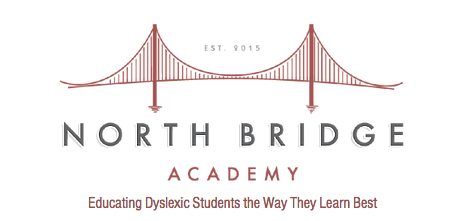Exit Interviewing - Why and How?
If you haven't already, it is time to start planning for exit interviews for families graduating or departing your school early. Sometimes exit interviewing is thought of as the ugly task no one wants to do, or has time to do, as the year comes to a close. Admission offices typically have the best of intentions - they will invite each family in to discuss their experience, the event will end with warm fuzzies, and a potential bad-blood marketing problem will have been avoided.
Surveying Declining Families
Post-Season Surveying
Phew.
In many parts of the country, admission offices are taking a deep breath, or are just about to take that breath...
It is ever so tempting to stop here. You have enrolled great new families, you've adeptly handled your waitpool, you have gently managed any denials. But there is a huge, HUGE opportunity in front of you: surveying families with varying admission and enrollment decisions.
Honoring Vulnerability in the Admission Process
The Healdsburg School Selects DNI Consulting
The Importance of empathy
A couple of years ago I had the privilege of participating in a workshop led by Leadership & Design, a professional development firm based in California. The workshop was focused on bringing design thinking to the admission process.
The Middle Management Conundrum
In my work with enrollment managers, I often hear about the frustrations associated with being part of middle management. The truth is that middle managers across many professional fields face similar struggles: a tremendous amount of responsibility without a lot of control. You are responsible for enrollment, and you carry essential knowledge about both internal and external communities. You may be the only person with one eye on each. But you aren’t the decision maker regarding staffing, programmatic priorities, or scheduling. You certainly don’t want to be in the middle of what can become a complicated landscape of personalities and priorities.
While this conundrum is not unique, the circumstances are specific to your school. However, there is one thing that all schools can do in order to support the difficult position of being in the middle: procure great data.
The combination of both quantitative and qualitative data is powerful and clarifying. Armed with real numbers coupled with qualitative information, you have a much stronger leg to stand on when discussing feedback and recommendations with your leadership team.
You still may not be the decision maker, but when you walk into the room prepared with a well constructed portfolio of data, your chances are much better that you can influence the direction and strategy your school chooses in support of enrollment goals.
To start, consider running a demographic trend projection report for your service area to learn, in broad strokes, what the market conditions may be in the coming years. Couple this with qualitative information and you will be in a much stronger position to make your case for the strategy you want to put in place.
North Bridge Academy Selects DNI Consulting
Admissions Tasks as Marketing Opportunities (and not just paper pushing)
Many schools call their enrollment management offices by the name “admissions”. While there is nothing inherently wrong with that title, admissions is actually a very small piece of an integrated strategic enrollment management approach. The admissions department at a hospital is a great analogy; the admissions department is where you go to fill out paperwork, jump through hoops, and, eventually, be “admitted”. This is clearly not the only function of what we call the “admission office” in schools.
As part of a strategic enrollment management program, “admissions” is defined as the actual activity that families engage in as part of the application process. While some schools enjoy deep waitlists and a very comfortable pool of potential families, the reality is that most tuition driven schools must constantly be recruitment-minded; that is to say, admissions functions must remain focused on outreach, promotion, and marketing.
When evaluating your own admissions functions, consider spots where families may hit hiccups in your process. Is it easy to schedule a visit? Are recommendation forms readily available? Is your phone system simple to navigate? Also consider how you might integrate marketing activities into admission tasks. How are you using the time when students are being evaluated to engage with parents? What follow up are you doing after a student visit? How are you interacting with recommendation writers?
An effective strategic approach to admissions functions includes an understanding of and commitment to an outstanding level of service. There is no room for anything other than personalized visit experiences, smooth transitions between levels of the enrollment funnel, and gold glove treatment of applicant families. Each distinct step in your admission process is an opportunity to more deeply engage the families in your funnel. The summer is an ideal time to reflect on each of these moments and, if needed, develop more fully your touch points with potential families.
(This post first appeared on www.iansymmonds.com)
Share
Enrollment Feasibility and Pricing Strategy: Vital and Timely
Enrollment Managers as Key Pipelines of Information
The One Thing to Focus on as School Begins
The Berkeley School Selects DNI Consulting
Dana to Lead Session at the Enrollment Management Association Annual Meeting
How to Use Research for Strategic Enrollment Management Planning
Staying on top of the research that supports enrollment is a vital piece of keeping your strategy sharp and specific. Carving out the time and resources to do this important work, while difficult to do, can only serve your higher level goals. However, having done good research is not quite enough. Now you have to apply it.
The "How" of Sound Research to Support Strategic Enrollment Management
Finding Time for Research
Next up in our series about research to support strategic enrollment management efforts: How to find the time?
In my previous post, I named five specific research inputs that are common, though that list is far from exhaustive depending on your research questions. At most schools, it’s simply not feasible to keep up with all of it annually, even with the best intentions.
Elements of Research to Support Strategic Enrollment Management
In my conversations with enrollment managers, we typically agree that robust research should be a priority. Then, I often hear some version of the following:
"I know I should be doing research but I'm unsure what research to do." "I know what research I want to do, but I don't have time." "I know what research I want to do, but I don't know how." "I've done some research, but I don't know how to use it."
Strong Recruitment Strategy
Tuition driven schools spend a great deal of time, and rightfully so, in the world of recruitment. This is how families end up in the proverbial (if outdated) "top of the funnel", which can feel like the holy grail for strong enrollment management. It is certainly true that bullet-proof recruitment practices are vitally important to enrollment. Having a steady stream of inquiries allows you to nurture leads through the funnel and into your matriculated student base.



















